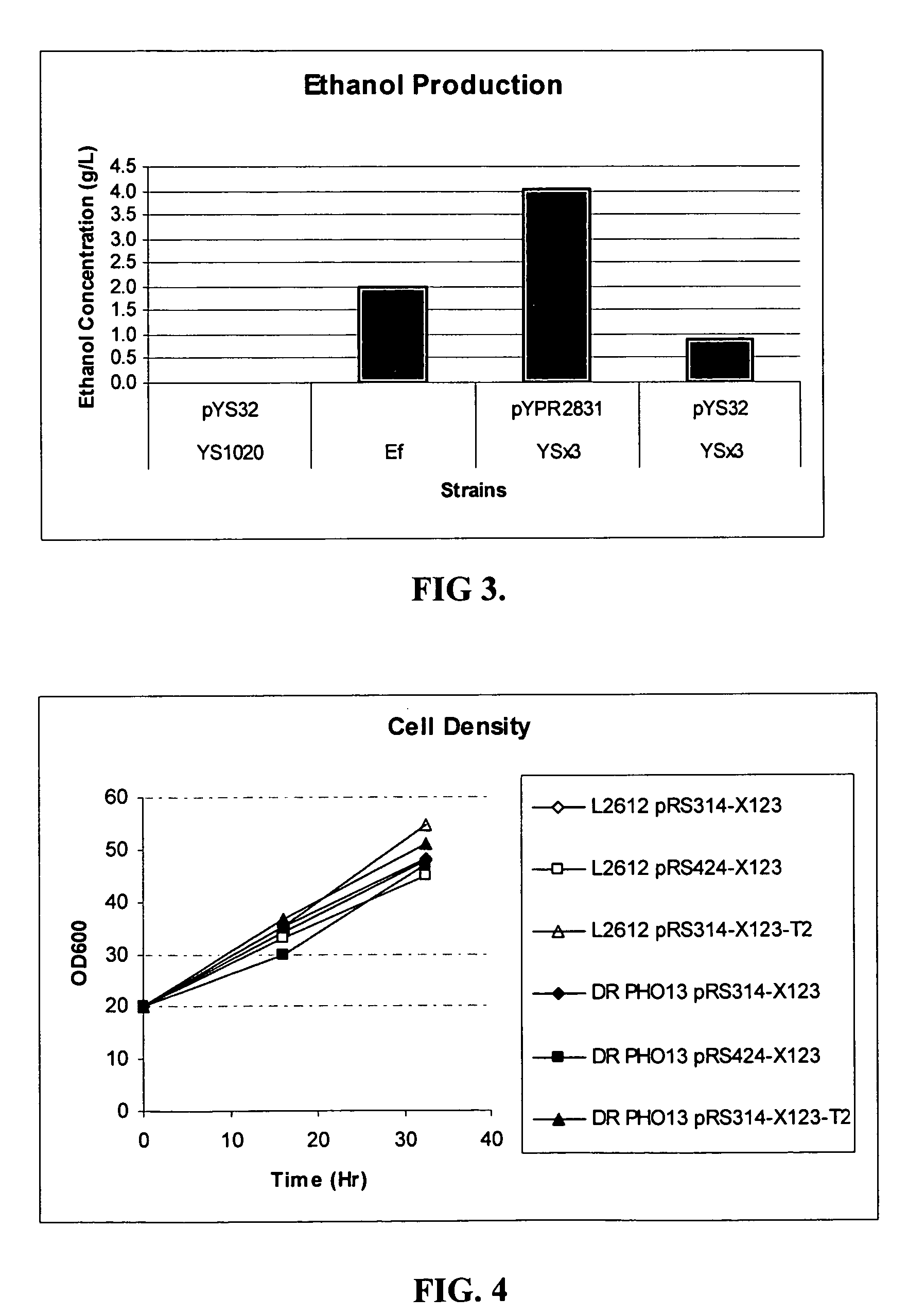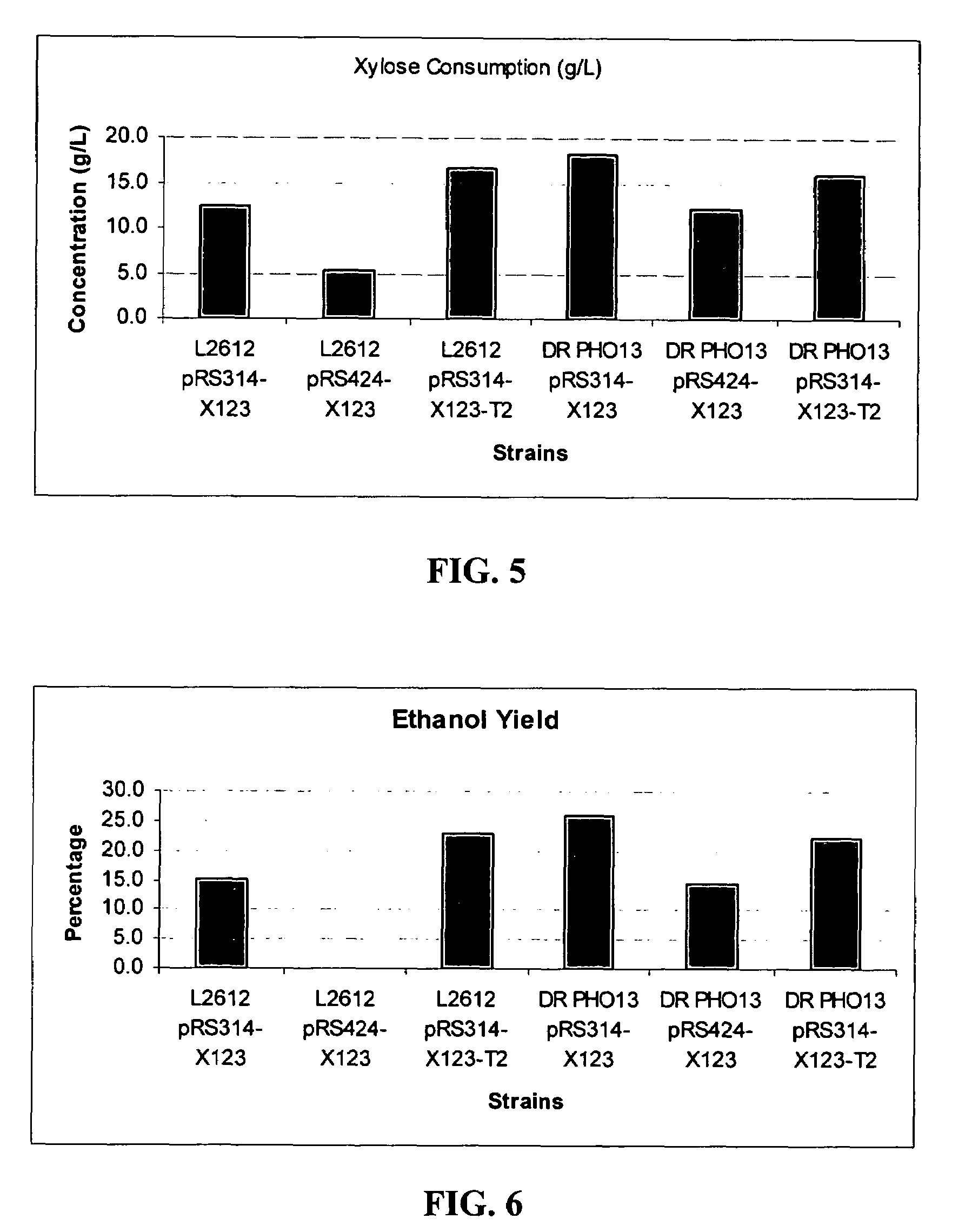Xylose-fermenting recombinant yeast strains
a technology of recombinant yeast and xylose, which is applied in the field of xylosefermenting recombinant yeast strains, can solve the problems of low ph, low yield, undesired co-products
- Summary
- Abstract
- Description
- Claims
- Application Information
AI Technical Summary
Benefits of technology
Problems solved by technology
Method used
Image
Examples
examples
[0037]Microbial strains, primers and plasmids. Saccharomyces cerevisiae L2612 (MATα leu2-3 leu2-112 ura3-52 trp1-298 can1cyn1 gal+) was the parental strain. Saccharomyces cerevisiae YS1020 (MATα leu2-3 leu2::LEU2-TDH3p-PsXYL1-TDH3T ura3:: URA3-TDH3T-PsXYL2-TDH3T trp1-298 can1 cyn1 gal+) was used as the recipient host for control experiments and as the parental strain for making. S. cerevisiae YSX3 (MATα leu2-3 leu2::LEU2 TDH3p-PsXYL1-TDH3T ura3::TDH3p-PsXYL2-TDH3T Ty3::G418R-PsXYL3 trp1-298 can1 cyn1 gal+) was developed in a previous study (Jin et al. 2003). Escherichia coli DH5α was used for plasmid preparation. The primers and plasmids used in this study are listed in Tables 1 and 2.
[0038]Media. Yeast strains without plasmids were grown on YPD (yeast extract 20 g / L, peptone 10 g / L and glucose 20 g / L). Strains with plasmids carrying TRP1 and / or URA3 markers were grown on yeast selection medium (YS), which was made of yeast nitrogen base (YNB) and casamino acids (10 g / L), supplement...
PUM
| Property | Measurement | Unit |
|---|---|---|
| OD | aaaaa | aaaaa |
| OD | aaaaa | aaaaa |
| dry weight | aaaaa | aaaaa |
Abstract
Description
Claims
Application Information
 Login to View More
Login to View More - R&D
- Intellectual Property
- Life Sciences
- Materials
- Tech Scout
- Unparalleled Data Quality
- Higher Quality Content
- 60% Fewer Hallucinations
Browse by: Latest US Patents, China's latest patents, Technical Efficacy Thesaurus, Application Domain, Technology Topic, Popular Technical Reports.
© 2025 PatSnap. All rights reserved.Legal|Privacy policy|Modern Slavery Act Transparency Statement|Sitemap|About US| Contact US: help@patsnap.com



